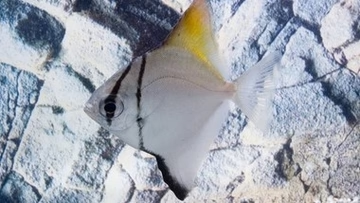
Livebearers: An In-Depth Guide to Popular Species
Livebearers are a fascinating group of fish that give birth to free-swimming young, bypassing the egg-laying stage common in many
Packaged with the highest commercial standards and 2 Day or Overnight Shipping with DOA Guarantee.

If you’re passionate about keeping fish, water quality isn’t just a detail—it’s the foundation of a thriving aquarium! Whether you’re a beginner or a seasoned aquarist, understanding the importance of water quality can mean the difference between a tank full of vibrant, healthy fish and one plagued by stress, disease, or even disaster.
Let’s dive deep into why water quality is so important, what factors affect it, and how you can keep your fish swimming strong! 🐠💦
Fish live and breathe in the water they swim in—literally. Unlike land animals, they don’t get to leave their environment for fresh air or relief from toxins. Instead, their entire well-being depends on the chemical balance of the water they live in. Poor water quality can lead to:
✅ Stress & Weak Immune Systems – Fish in low-quality water become stressed, making them more susceptible to disease.
✅ Toxin Buildup – Ammonia and nitrites, which come from fish waste and decaying food, can be deadly if not managed.
✅ Oxygen Depletion – Polluted or stagnant water reduces oxygen levels, making it harder for fish to breathe.
✅ Algae Blooms & Murky Water – Poor water conditions often lead to excessive algae growth, which can suffocate plants and create an unhealthy environment.
✅ Shortened Lifespan – Over time, exposure to unbalanced water can shorten the lifespan of your fish, even if they appear fine at first.
Maintaining clean, balanced water ensures your fish stay healthy, happy, and beautifully colored, making your aquarium a joy to look at and care for.
To keep your water in top condition, there are a few key factors you need to monitor and manage:
Different fish species have different temperature preferences. Keeping the water too hot or too cold can cause stress, sluggishness, and even death.
Invest in a high-quality aquarium heater and thermometer to keep things stable!
pH measures how acidic or alkaline the water is. Different fish prefer different pH levels:
Using test kits regularly helps avoid pH swings, which can stress your fish.
Fish naturally produce waste, and as it breaks down, it releases ammonia—which is highly toxic. A healthy aquarium has a functioning nitrogen cycle that converts ammonia into nitrites (also toxic), and then into nitrates (less harmful but still needs control).
To manage this, establish a strong beneficial bacteria colony by cycling your tank before adding fish and performing regular water changes.
Fish need oxygen to breathe, and poor circulation or overcrowding can deplete oxygen levels. Keep your water well-aerated with:
If your fish are gasping at the surface, it’s time to check oxygen levels!
Your filter is your aquarium’s life support system. It removes waste, promotes oxygen exchange, and helps balance water chemistry. But filters alone aren’t enough—you also need regular water changes.
This keeps harmful toxins from building up and keeps your water crystal-clear!
Now that you know why water quality is essential, here are some practical do’s and don’ts to keep things in check:
✔ Test your water weekly with a quality test kit
✔ Perform regular water changes (20-30% weekly)
✔ Use a good filter suited for your tank size
✔ Feed high-quality food to reduce excess waste
✔ Choose compatible fish to prevent stress and aggression
✔ Acclimate new fish slowly to prevent shock
❌ Overfeeding – Uneaten food pollutes the water
❌ Overstocking – Too many fish leads to excess waste and oxygen depletion
❌ Ignoring water tests – Problems aren’t always visible!
❌ Using untreated tap water – Always use a water conditioner to remove chlorine
Water quality is the single most important factor in fishkeeping. A well-maintained aquarium not only looks beautiful but ensures your fish live long, healthy lives. By monitoring parameters like temperature, pH, ammonia, and oxygen levels, performing regular water changes, and maintaining a strong filtration system, you’ll create a stable environment where your aquatic pets thrive.
💙 Remember: Happy fish start with healthy water! So test regularly, stay consistent, and enjoy the rewarding experience of fishkeeping. 🐟✨

Livebearers are a fascinating group of fish that give birth to free-swimming young, bypassing the egg-laying stage common in many

🐠 Top 10 Tropical Fish for Beginners – A Guide to Your First Aquarium 🌿 Starting your first aquarium can

A balanced diet is crucial for the health, coloration, and longevity of your tropical fish. Feeding your fish a variety

Doing our best to get farm to door quality fish and plants at affordable prices to you.
Design and developed by Source Aquatics LLC. Copyright 2025